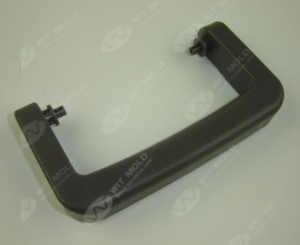There are a variety of manufacturing methods used to manufacture products that use plastic polymers, including two-shot injection molding, compression thermoset molding, and extrusion. Although all of these are viable manufacturing processes, this process has several advantages that make it the first choice of many plastic manufacturers. The process is relatively simple; inject one material into the mold to make the initial part of the product, and then inject a second material that is compatible with the raw material. Many manufacturers use this method to make plastics or polymers for three good reasons.
Two-shot injection molding is cost-effective
The two-step process only requires one machine cycle, the way the initial mold is rotated and the product placed around the second mold, so that a second, compatible thermoplastic can be inserted into the second mold. Because this technology uses only one cycle, rather than a separate machine cycle, any production operation cost is lower, and fewer employees are required to manufacture the finished product while delivering more projects per run. It also ensures a firm bond between the materials without the need for further assembly down the line.

Two-shot injection molding
Strengthen product quality
Two-shot injection molding improves the quality of most thermoplastics in the following aspects:
Improved aesthetics. When products are made of different colored plastics or polymers, they look better and are more attractive to consumers. If more than one color or texture is used, the product will look more expensive.
Improve ergonomics. Because this process allows the use of a soft-touch surface, as a result, items can have ergonomically designed handles or other parts. This is especially important for tools, medical equipment, and other hand-held items.
When silicone plastic and other rubber materials are used for gaskets and other parts that require a strong seal, it provides a better seal.
It allows you to combine the outstanding comfort and practicality of hard and soft polymers with even the smallest products.
Compared with overmolding or a more traditional insertion process, it can greatly reduce the number of dislocations.
It enables manufacturers to create more complex mold designs using multiple materials that cannot be effectively bonded by other processes.
The bond created is very strong, creating products that are more durable, more reliable, and have a longer lifespan.
Versatility
Product manufacturers favor two-shot injection molding, with a wide range of applications, including automotive interior parts, medical equipment, tools, and toys. It allows manufacturers to combine various materials and colors to create final products that are both strong and attractive. Some materials can be effectively combined with this process, including silicone and thermoplastics, nylon and thermoplastic elastomers, or hard nylon and soft-touch materials.
Two-shot injection molding can solve your company’s product production dilemma. An experienced plastic manufacturer can guide you through the process from concept to finished product and ensure a cost-effective solution.
We are Two-shot injection molding suppliers. Please feel free to contact us if you need or want to know about our products.

